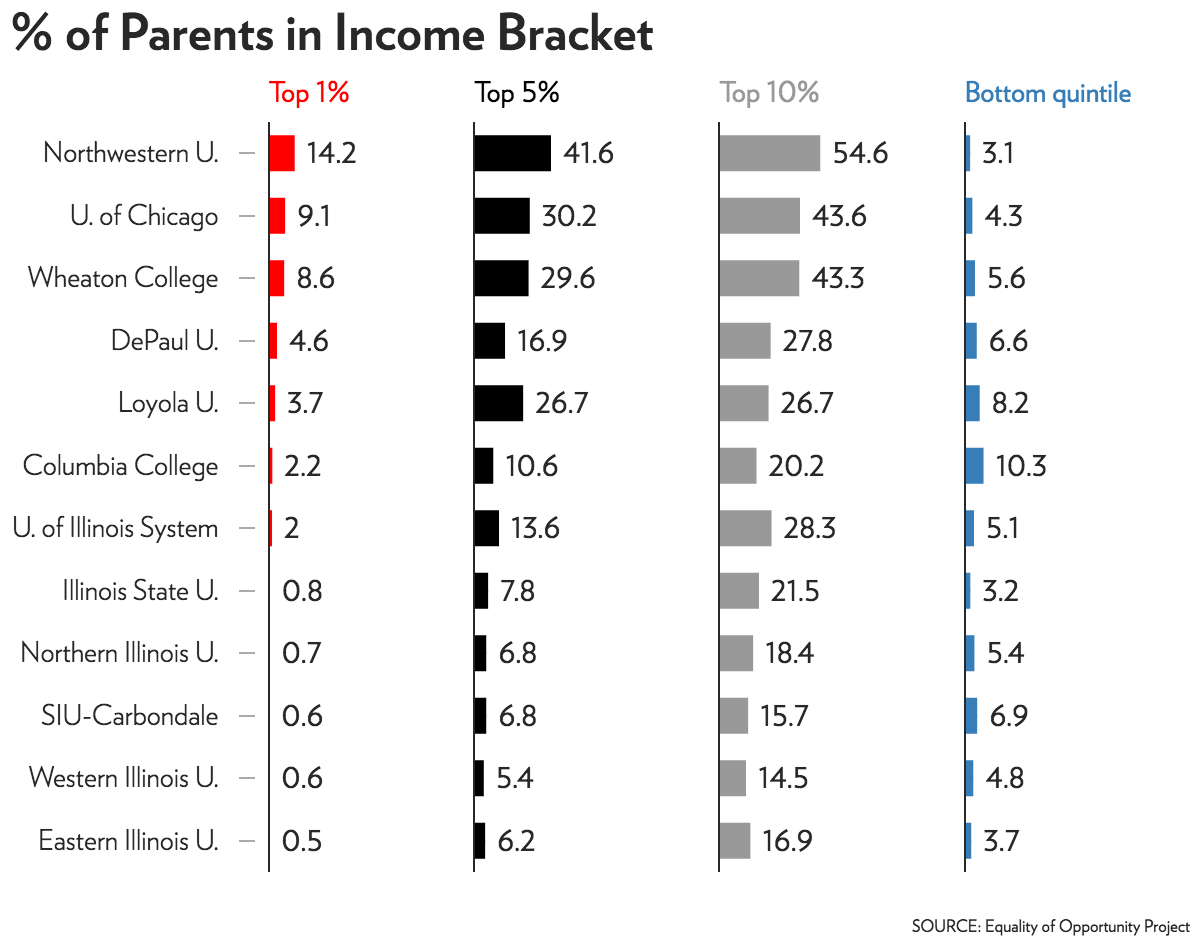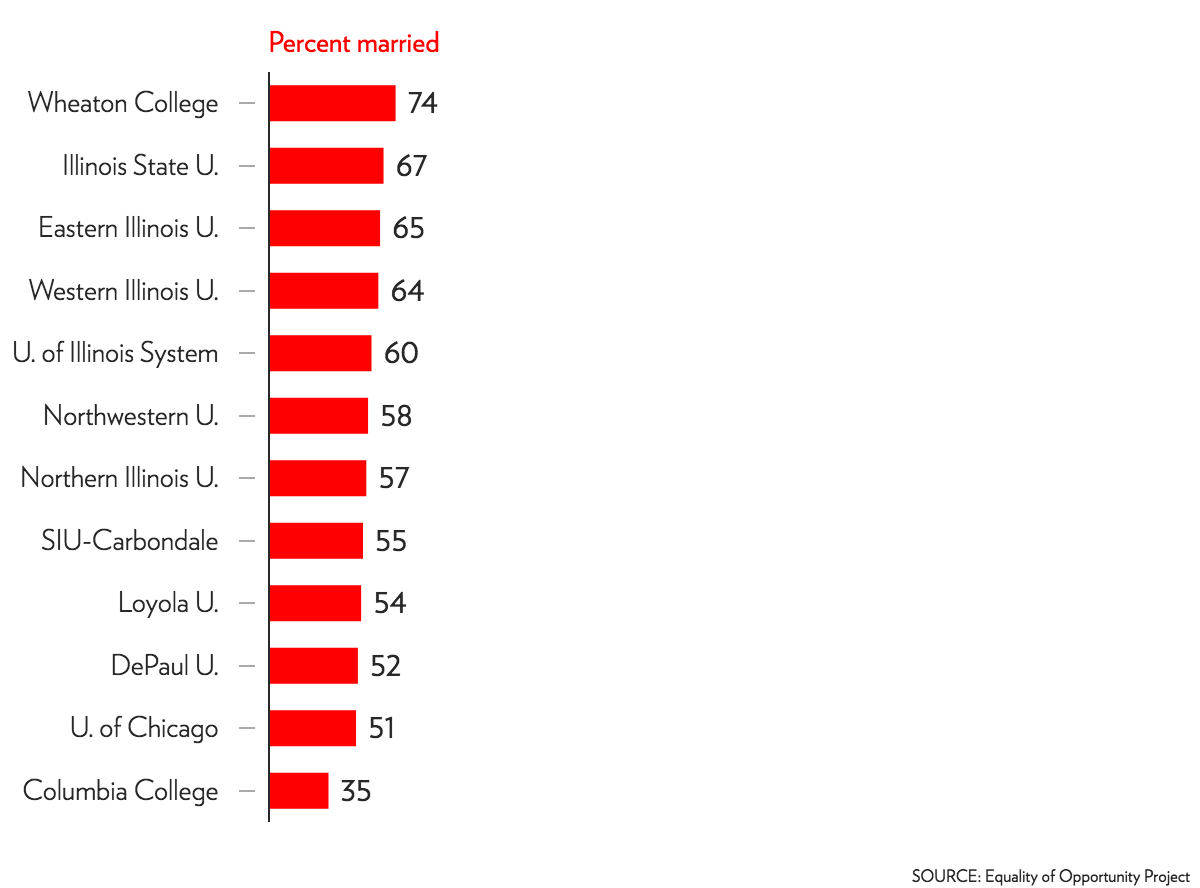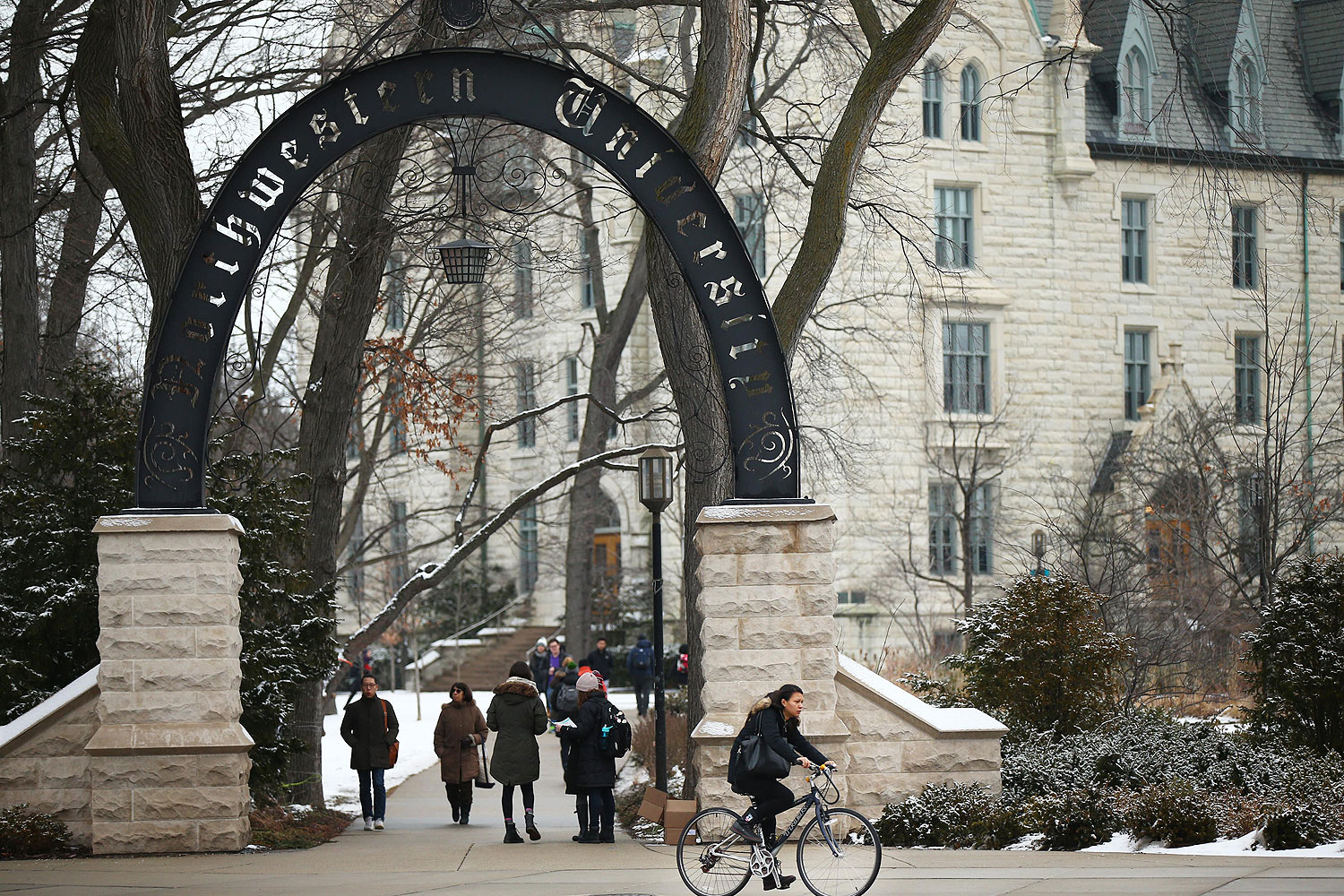One of the advantages to academic research is that, because of the deference given to researchers, they can get their hands on data that is not given to mere mortals. And one of the more remarkable datasets I've seen comes from a new paper led by Stanford economist Raj Chetty, whose current research focuses on equality of opportunity—and whose data became the centerpiece for a fascinating new dataviz from the New York Times.
Chetty and his co-authors obtained attendance rolls from all Title IV colleges and universities for students who attended between 1999-2004, the 1980-1982 birth cohort (meaning I'm almost certainly in this dataset). Then they were able to anonymously match those students with both their parents' incomes and their own, in adulthood, through tax records. It's illuminating information that is not easily obtained.
Using that data, Chetty and his co-authors looked at a range of results related to who goes to what colleges and what happens to them afterward, through the lens of income.
Some of the numbers are incredible: for instance, in the 12 "Ivy-Plus" colleges (the Ivy League plus Stanford, MIT, the University of Chicago, and Duke), more students come from families in the top one percent (14.5 percent) of all American households than the bottom half (13.5 percent). In real dollar amounts, that means students at these elite colleges are more likely to come from families making over $512,000 in household income (in 2015 dollars) than they are to come from families making $58,000 or less; less than 4 percent of students come from families in the bottom fifth of all household incomes, making $25,000 or less.
In other words, attendance at elite universities draws heavily from the wealthy and almost entirely from the middle class and above. But when students from families in the bottom quintile of household income attend Ivy-Plus schools, almost 60 percent of them reach the top quintile for individual income in their 30s, earning at least $58,000 a year—and the rate of mobility is higher than at non-elite schools. It's just that very few bottom-quintile students end up in those elite schools.
Those patterns show up in data from Illinois schools as well. Chetty and his team got data from all of them; I've chosen a few with good sample sizes, all over 400 students. (Because of how the data works, the University of Illinois system—Urbana-Champaign, Chicago, and Springfield campuses—aren't separated into separate schools.)
First, the average and median household incomes of their parents:
_Parents'_median_income_(2015_%24)_chartbuilder.png)
Just from the average versus the median, you can see the effects of wealth. The average income of Northwestern parents—of children born from 1980-1982—is six times the national average. But the differences in median income are more modest, likely because a small number of extremely wealthy people bring the average way up.
The outlier is Columbia College—it's in the middle of the pack for average income, but has the lowest median income. You can make a good case for this being an admirable pair of numbers, since it suggests that Columbia attracts both the rich and poor.
The next graph gives more evidence of that.

These data show the dilemma of college in an unequal society. Columbia's in the middle of the pack for students with wealthy parents, but it has the highest percentage of students with bottom-quintile parents. Nonetheless, Columbia still only has 10 percent; in a perfectly representative student body, it would be 20 percent.
At both elite schools and state schools in Illinois, only a tiny portion of students come from bottom-quintile households. Those who do go to elite and selective schools, they have a good chance of climbing the economic ladder—though outcomes vary widely, depending on the school. (Below, the authors' "success rate" measures the percentage of those students whose parents were in the bottom quintile and who reach the top quintile as adults in their 30s.)
_chartbuilder.png)
Northwestern also tops the list in the average income of its graduates (the figures below don't take into account the small percentage of those with zero income in 2014).

Columbia College is an outlier here as well. It's an idiosyncratic school: it's comparatively inexpensive; it takes a substantial percentage of students whose academic performance ranks in the bottom half of their high-school classes; it takes a lot of low-income students (currently 40 percent are on Pell grants); and a lot of its students study the arts, which simply don't pay very well on average. This isn't necessarily bad, and there are a lot of things that are good about that approach, but it's hard to make it work, particularly when people are worried about their own position in an unequal society—as Ted Fishman found when he wrote about its future for Chicago.
Of course, another way to pursue financial stability is to get married—two incomes makes paying for housing or kids a lot easier. That's data the authors collected as well, and there's quite a range.

Overall I was relatively happy with the performance of my alma mater, the University of Chicago. Of the Ivy-Plus schools, it had the lowest median parent income, the second-highest percentage of students from the bottom quintile, and the third-highest mobility index ("the likelihood that a student moved up two or more income quintiles").
But it also had the lowest likelihood that a student from the 1980-1982 birth cohort would be married by 2014, not that it came as a surprise. So it's a good choice if you want to move up into the middle class—but if you want to go the two-income path up the income ladder, Wheaton's a better choice.



